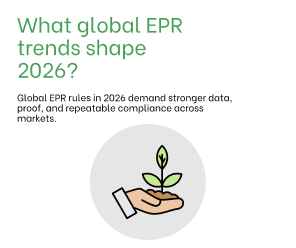EU VAT in the Digital Age Reform
EU VAT in the Digital Age Reform
The European Union introduced a big reform on digitalization of VAT across the EU. The main aim of this reform is to have all VAT data information about all sellers. This reform consists of 3 parts:
- E-invoices and real-time reporting about all invoices;
- Single VAT registration in all EU states;
- Obligations for marketplaces/platforms to remit VAT and exchange information with tax authorities.
The document based on which all this is introduced has the name “Value Added Tax (VAT) in the Digital Age (ViDA)”. This reform aims to make VAT fully transparent and ensure compliance with regulations.
This article discusses the dynamics of digital tax reporting, outlining important trends and their implications for companies in the EU.
Timeline for ViDA reform
- 2024– member states are at liberty to establish domestic e-invoicing rules without prior authorization from the European Commission. This may only apply to businesses established in the country for domestic transactions;
- 2027 – Single VAT Registration. Platform reform (tax remittance +reporting);
- 2030 – Digital Reporting for intra-community transactions;
- 2035 – Unification of domestic and intra-community e-invoicing rules and reporting rules.
Why was ViDA reform introduced?
3 suppositions led to the introduction of new VAT reform:
- Growth of online retail: The rapid expansion of online commerce is increasing the necessity for stringent digital tax reporting.
- Gaps in VAT: High VAT gaps are prompting countries to implement digital reporting to monitor untraceable transactions.
- International deals exert increased pressure on tax agencies, resulting in the need for new tax programs and technical systems.
Summary of the VAT in the Digital Age Directive
The VAT in the Digital Age (ViDA) Directive from the European Commission aims to modernize VAT rules for online merchants selling goods to EU buyers. It proposes modifications to EU VAT regulations built on three main pillars:
- Requirements for digital reporting;
- Single VAT registration;
- Platform Economy.
The directive seeks to standardize electronic reporting structures across the EU, reduce inconsistencies in national reporting systems, and eliminate provisions permitting deviations from EU VAT rules.
Current e-Reporting Tools in the EU
DAC7 reporting for platforms is a big source of digital information for Tax authorities, it was launched in 2023. OSS returns launched in 2021 is a successful example of inta-community reporting. Here we give you some examples of digital reporting tools commonly used in the EU:
VAT Registers
- Aggregate detailed transactional data.
- This includes details for VAT amounts, the seller and buyer, and taxable amounts.
- Required in nations such as Bulgaria, Croatia, and Estonia.
SAF-T (Standard Audit File for Tax)
- By OECD standards.
- Used for audits involving financial and tax-related information.
- Compulsory for VAT reporting in France, Austria, Lithuania, and Poland.
Reporting in real-time
Electronic Invoicing
- Involves sending organized electronic invoices directly to tax authorities.
- Mandated for B2B transactions in Italy.
- Gradually adopted by other EU countries.
Current Digital Reporting Laws in the EU
France E-invoicing
- E-Reporting Requirements: Reporting is required for all domestic B2B transactions, B2C transactions, and cross-border transactions (both inbound and outbound).
Large Enterprises:
- Effective Date: July 1, 2024;
- Definition: Companies with 5,000 or more employees, or annual revenue of more than €1.5 billion.
Mid-sized Enterprises:
- Effective Date: January 1, 2025;
- Definition: Companies with 250 to 4,999 employees, or annual revenue between €50 million and €1.5 billion.
Small and Micro Enterprises:
- Effective Date: January 1, 2026;
- Definition: Companies with fewer than 250 employees, and annual revenue below €50 million.
Poland E-Invoicing
- E-Reporting Requirements: E-reporting encompasses all domestic transactions, cross-border transactions (both inbound and outbound), and B2B and B2C transactions.
Voluntary Phase:
- Start Date: January 1, 2022;
- Details: Businesses were encouraged to start using the KSeF (Krajowy System e-Faktur) platform on a voluntary basis to familiarize themselves with the system.
Mandatory Phase:
- Effective Date: July 1, 2024;
- Details: E-invoicing through KSeF becomes mandatory for all businesses. This includes mandatory real-time reporting of transactional data to the Polish tax authorities.
Portugal E-Invoicing
- E-Reporting Requirements: E-invoicing is mandatory for all public procurement transactions, with gradual implementation for B2B and B2C transactions.
Large Companies:
- Mandatory since January 1, 2021.
SMEs and Micro Enterprises:
- Gradual implementation with mandatory compliance for all VAT-registered entities as of January 1, 2023.
Romania E-Invoicing
- E-Reporting Requirements: Mandatory for B2G (Business-to-Government) transactions since July 1, 2022, and gradually extended to B2B (Business-to-Business) transactions in specific sectors.
Spain E-Invoicing
- E-Reporting Requirements: Invoices must be transmitted through the public platform FACe (Factura Electrónica) for public sector transactions or other certified platforms for B2B transactions.
Public Sector (B2G Transactions):
- Implementation Date: E-invoicing became mandatory for all public administration suppliers on January 15, 2015.
- Details: All invoices to public entities must be submitted electronically via the FACe platform.
Private Sector (B2B Transactions):
- Large Companies: Mandatory e-invoicing and SII reporting for large companies, VAT groups, and companies under REDEME started on July 1, 2017.
- SMEs and Other Businesses: Gradual expansion with voluntary adoption encouraged.



